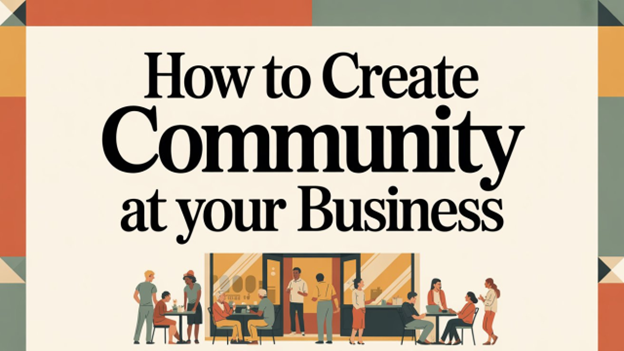The Referral Engine: How to Get People Talking About Your Business
- People talk about businesses that surprise them in a good way.
- Loyal customers are like neighbors who recommend a great mechanic.
- Employees are key to creating those “wow” moments customers share.
- Make referring you so easy that customers barely have to think about it.
- A great referral system grows like a garden when you plant the right seeds.
642 words ~ 3.5 min. read
The best marketing doesn’t feel like marketing at all. It feels like a friend saying, “You’ve got to try this place.” Think about it. The last time you tried a new mechanic, plumber, or hair stylist, did you pick it because of an ad, or because someone you trust recommended it? That is the power of referrals.
In his book *The Referral Engine: Teaching Your Business to Market Itself*, John Jantsch says referrals aren’t random. They happen when you build a business people love to talk about, treat loyal customers like VIPs, and make it easy for them to share your name. And there’s one more piece many businesses overlook—your employees play a huge role in creating experiences worth recommending.
Give People a Story Worth Sharing
Imagine taking your car to two different repair shops. One fixes the problem and hands you the bill. The other vacuums the interior, leaves a thank-you note on the dashboard, and calls you a week later to make sure everything is running smoothly. Which one are you more likely to recommend to a neighbor?
People don’t talk about “fine” or “good.” They talk about moments that feel special. A “referable” business goes beyond getting the job done. It creates small surprises that make customers feel cared for. That might mean following up after a service, adding a handwritten thank-you note to an order, or solving a problem before the customer even asks.
Ask yourself this: if a customer told a friend about us, what story would they tell? If you can’t answer that clearly, start there.
Treat Loyal Customers Like Friends, Not Transactions
Referrals don’t come from strangers. They come from people who feel connected to your business. Think about how you recommend a great mechanic to friends. You do it because you trust them and want your friends to have the same good experience.
Your customers feel the same way when they feel valued. Discounts are nice, but loyalty is built on connection. Send thank-you notes. Offer early access to new products. Give your regular customers the first look at something new. These little touches make customers feel like insiders, and people love sharing things that make them feel “in the know.”
Empowering Employees to Drive Referrals
Employees are the ones delivering most of those referral-worthy moments, which means they need to be motivated to create them. If customers are the voice of your referral engine, employees are the spark that gets it going.
Think about inviting friends to your home. You make sure everything looks great because it’s *your* place, and you take pride in it. Employees feel the same way when they feel ownership of the customer experience. Share success stories with your team, ask for their ideas, and celebrate when they create “wow” moments.
Recognition matters. People work harder when their effort is noticed. Instead of only rewarding sales, reward the behaviors that lead to referrals. Create a “Wow Moment” board where employees share stories of times they went above and beyond. Give a small prize for the best story each week or month.
Make recognition personal too. A quick shout-out in a team meeting or a handwritten thank-you from a manager can motivate more than a generic “good job.”
Finally, tie incentives to referrals themselves. Track who customers mention when they leave reviews or refer friends. Reward employees who get named. A monthly prize for “most mentioned in customer referrals” turns great service into a fun challenge.
When employees feel proud of the experience they deliver, they create moments customers can’t wait to share.
Make Referrals Effortless
Even the happiest customers won’t talk about you if it feels like work. Think about how you share a funny video. You click a button, and it’s done. Referring your business should feel just as easy.
Give customers simple tools. That might be a shareable link, a short message they can copy and paste, or a quick way to send your information to a friend. If they have to search for your website or figure out what to say, most won’t bother.
The Bottom Line
Think of referrals like planting a garden. A great experience is the seed. Loyal customers are the water that keeps it growing. Engaged employees are the roots that hold it all together. And making referrals simple is the sunshine that helps it bloom.
If you want people to talk about you, give them something worth talking about. Treat customers like friends, empower employees to create moments worth sharing, and make referring you feel as easy as sharing a favorite song. Do that, and you’ll build a business that grows every time someone says, “You’ve got to try this.”
---
The Leavenworth-Lansing Area Chamber of Commerce is a private non-profit organization that aims to support the growth and development of local businesses and our regional economy. We strive to create content that not only educates but also fosters a sense of connection and collaboration among our readers. Join us as we explore topics such as economic development, networking opportunities, upcoming events, and success stories from our vibrant community. Our resources provide insights, advice, and news that are relevant to business owners, entrepreneurs, and community members alike. The Chamber has been granted license to publish this content provided by Chamber Today, a service of ChamberThink Strategies LLC.




